Vol. 1, Issue. 4: Temples Galore
Get ready for the most zen you've ever vicariously experienced.
Day 12 - Bamboo Forest + Tennryu-ji + Kinkaku-ji
We woke up incredibly early to go to the legendary Arashiyama bamboo forest in western Kyoto, which is part of a large area of shrines, temples, and forested areas. At first, the bamboo forest felt a little underwhelming as trash and work trucks kept passing us, followed by those typical truck belching noises. However, as we strolled further into the forest, we noticed how the bamboo swayed with the wind, adding that classic rustling sound to the soundscape. At 8 am, there was virtually no one else in the forest, so we could take photos as leisurely as we wanted. Deeper in the forest, we watched monks studiously sweeping brown leaves from the gutter and old ladies lugging bags from their daily grocery trip.
Next, we went to Okochi-Sanso Villa which was the former home and garden of Denjiro Okochi, a famous samurai actor in Japanese period films. It has carefully maintained Japanese gardens and has fantastic views of the Kyoto cityscape. After, we visited some of the surrounding attractions, including Horinji Temple and Togetsu-kyo bridge. We really just stumbled upon Horinji Temple but we’re so glad that this happened because there was a gorgeous deck that the monks specially opened for us after they saw my dad trying to catch a glimpse of the view. Just as we walked through the gate onto the deck, we spotted a rainbow shining in the distance over Kyoto. It felt like one of those magical moments when you know for sure that you’ll return to a place.
Tenryu-ji Temple, a 1300s Zen temple, was our next big stop, and its main attractions are its serene rock gardens, expansive main hall, and its famous Buddhist cuisine restaurant. We went to this restaurant (also a Bib Gourmand) for lunch and were blown away by how fresh yet mild vegetables could make for such a delicate, satisfying meal. The meal is composed of a variety of pickled vegetables, soy and root vegetables. One of my favorite small dishes they served was gomadofu, a sesame “tofu” that’s actually made from just cornstarch, water, sesame paste, and flour. Somehow, with the correct proportions, it tastes creamy and almost elastic.

Tenryu-ji itself was also a fantastic temple to explore. To be honest, I’m still kind of skeptical of rock gardens which just seem like a lazier way of covering the surrounding land with decorations instead of plants. I’d much prefer seeing even ungroomed, unruly plants than some raked pebbles. Luckily, Tenryu-ji also had some gorgeous plant gardens on its grounds.
We hopped on the manually operated Randen trains to our next stop, Ryoan-ji. This temple is also known for its rock temple, which has 15 rocks and is supposed to represent tigers carrying cubs across a pond. To be honest… i mostly just saw rocks. But, the temple also had a spacious pond area and even had some cute islands with a bridge.
Our final stop of the day was Kinkakuji, probably the most glamorous temples in Kyoto, because its top two floors are entirely gold plated. As you walk up to the pond in front of the temple, the temple immediately comes into view and you can’t help but admire how *shiny* it looks on the backdrop of the lush green trees. You’re only really allowed to walk around the pond as the inside of the temple is closed to commoner visitors.
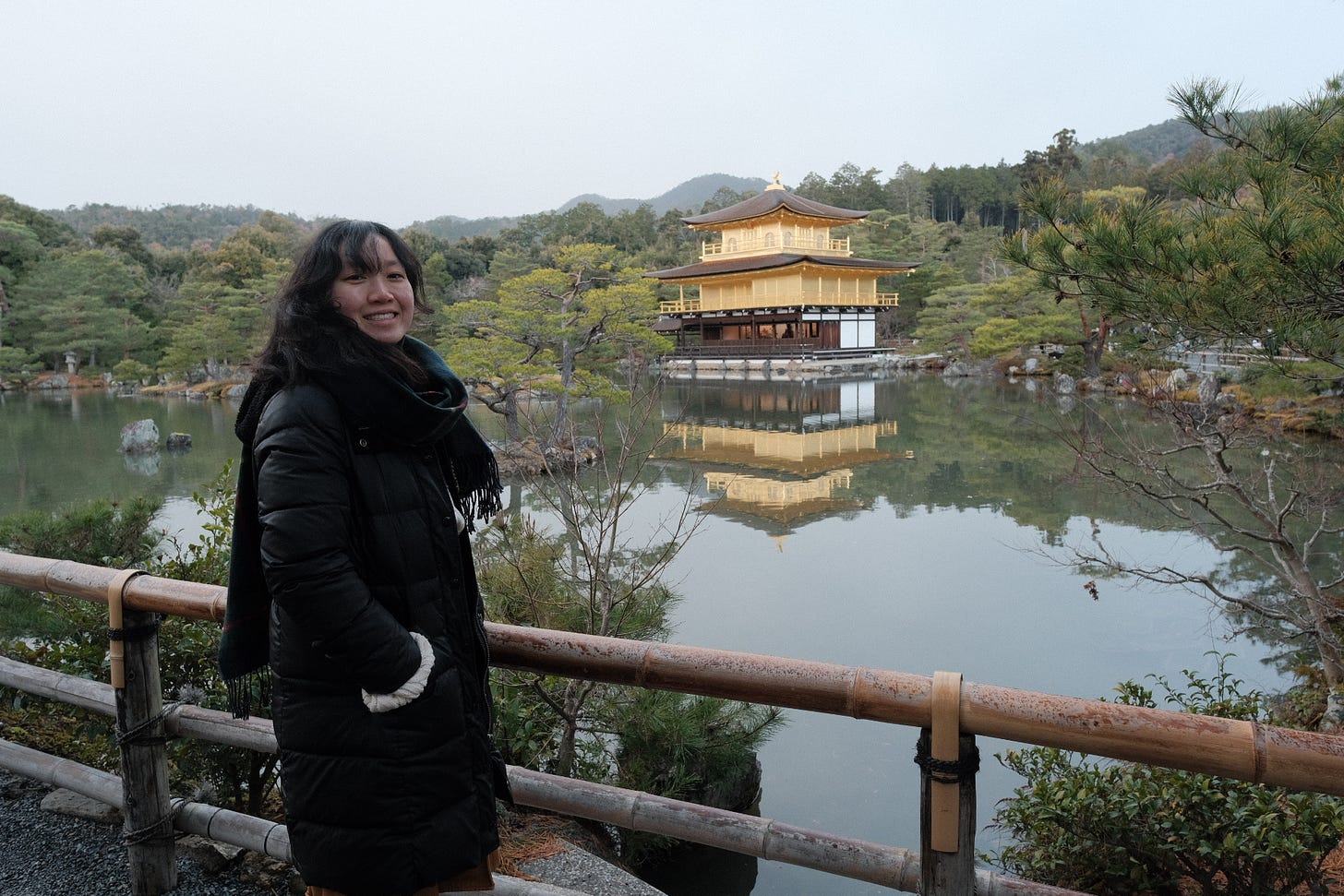
Our appetite was huge by the end of the day, so Zuri and I went to eat oyakodon at Hachikian, on the seventh floor of a big department store. Oyakodon is an ultimate comfort concoction of simmered chicken, egg, and scallions layered onto a steaming bed of rice. This place served the bright orange egg yolk raw on top which you could mix with the rice to make an almost porridge consistency. Unfortunately, the allergies hit once more when I later figured out that the oyakodon was simmered in seafood broth.

Day 13 - Moss Temple + Kiyomizudera
This was Zuri’s second-to-last day with us, so she roused us early to tackle one quick shrine visit before some huge attractions. We took a speed walk to Heian Temple, a majestic red Shinto shrine complex with a sprawling park built in 1895. We didn’t have time to enter their gardens, but the morning light against the temple’s bright red edifices was already a glorious way to start the day.
We then took a taxi to Saiho-ji, the famed and notoriously elusive moss temple. In order to get an entrance ticket to this temple, Zuri had a mail a letter to request an entry time nearly two months in advance of our trip. Then, just a few days before we left, she received a confirmation ticket with our assigned time back in the mail. We hypothesize that after years of overtourism, these logistical, old-fashioned workings are for deterring the masses. But, I’m so glad Zuri went through all the motions because during the four hours that we spent slowly absorbing every crevice of the property, the temple was muted and only a few tourists milled around. When you arrive you start the visit with some calligraphy practice of a Buddhist sutra. I realized that my mediocre handwriting from Chinese school in middle school carried over, and even with the template, my written sutra looked childish. However, my sister and my mom both did theirs perfectly, so at least Buddha had theirs to look forward to.
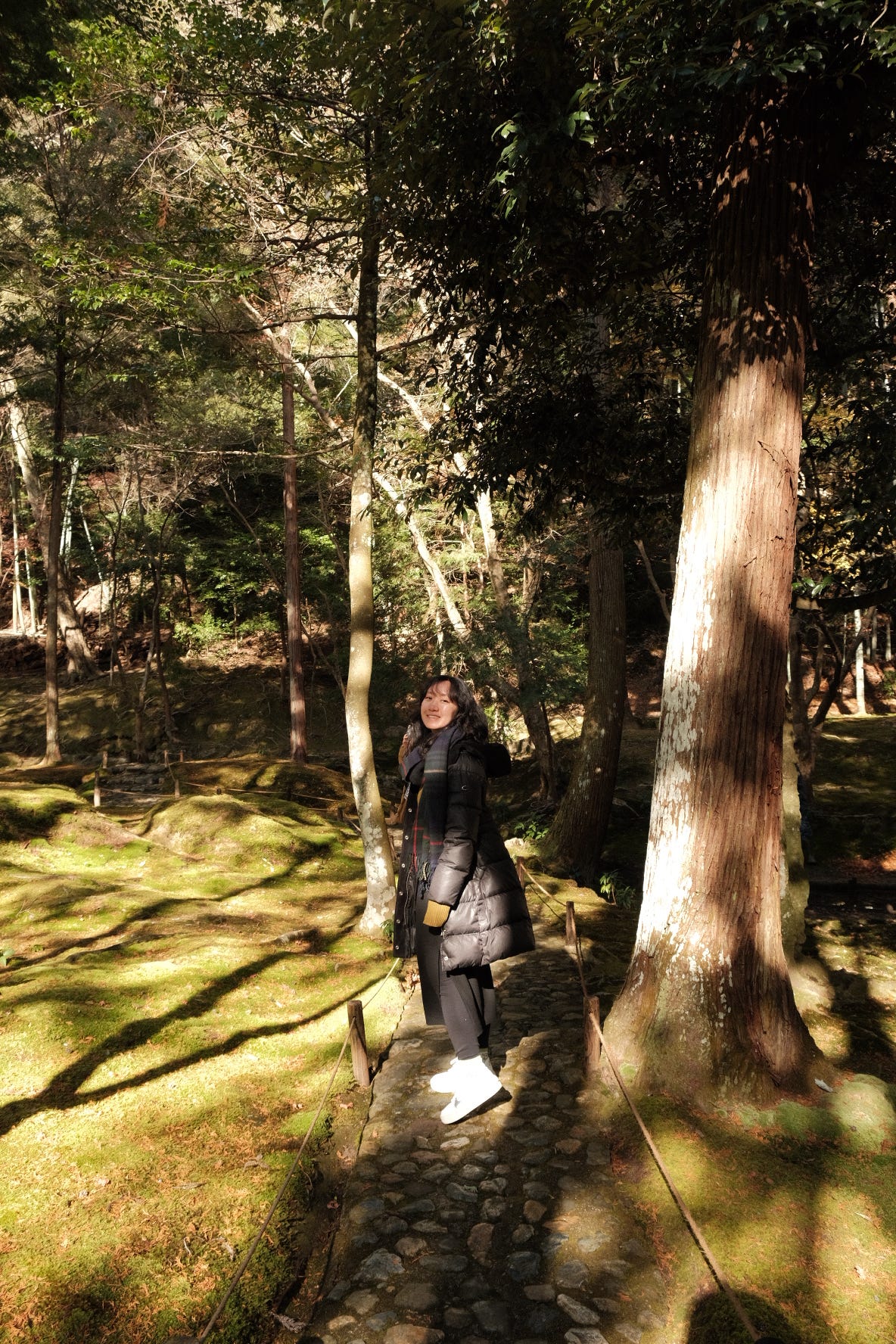
After we finished writing our sutras, we proceeded to the actual moss garden. Apparently, the garden has over 120 different varieties of moss, and during our walk, I recalled our moss is not only important in retaining water for our ecosystems, but it also has surprising ecosystem services like protecting our permafrost. The moss garden is a meticulously designed landscape complete with a small pond and small moss-covered bridges. Even though the overall space was relatively small compared to the grandeur of Heian Temple, we walked the garden loop twice to truly absorb how every centimeter is covered in a shade of green ranging from jade to fluorescent.
On almost the opposite side of the spectrum, we headed to Kiyomizudera Temple, one of the most visited sites in Kyoto, and the crowds definitely showed up on that day. At around noon and on a weekend, the terraces of Kiyomizudera were packed with people dressed in kimonos and posing among the grand wooden stage. We didn’t take that many photos since there were so many people, but I appreciated the view of Kyoto from the hillside.
After the temple, we got yummy matcha shaved ice with red beans and wandered around the rhyming Sannenzaka and Ninenzaka, idyllic streets that flow down from Kiyomizudera. They’re filled with rows and rows of small food stalls, souvenir shops, and kimono dress stores. Normally, we love going from shop to shop, but the hordes of tourists detracted from the experience slightly.
In order to escape the crowds, we decided to visit Kodai-ji, a tranquil Buddhist temple with a lovely garden, and there were some special Buddhist statues outside that represented various good luck charms.
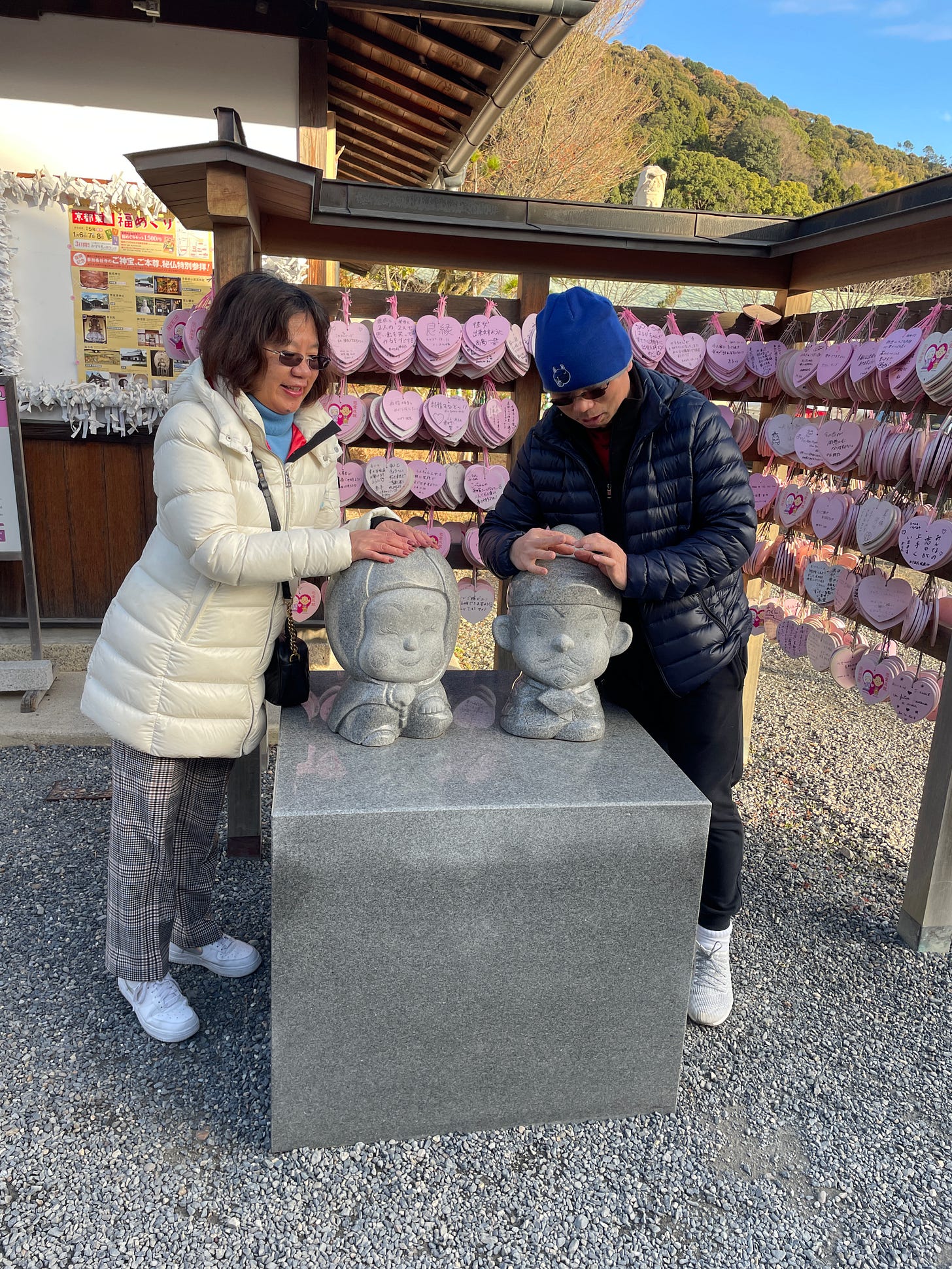
Yasaka shrine is one of the only ones open past 5 pm in Kyoto, and it’s easy to understand why. When its rows of crimson lanterns illuminate against the night, the whole temple is washed in a bright glow. It’s also probably the closest thing Kyoto has to nightlife with people lining up to ring the sacred bell, buy omamori (good luck amulets), and eat small snacks from vendors.

We wrapped up this night with one of the most memorable dinners from the trip at Kichi Kichi Omurice! You’ve most likely seen this restaurant on YouTube with Buzzfeed or on TikTok, but we were in store for the world’s most famous omelet rice. The second we walked in, I almost felt starstruck in the presence of Motokichi Yukimura, the red-haired smiley chef who is practically a one-man show for the whole hour. He grins and welcomed us warmly, encouraging us to take photos and videos as we pleased and even provided us with a phone stand. We watched him prepare the vegetables, stir fry at least seven pounds of fried rice in his massive wok, and then carefully plate each one. Then, came the fun part. For each omurice, he would whip up is perfectly gooey omelet in a matter of 90 seconds (we timed him), and plate it either with the dramatic flourish of his knife or by tossing the omelet carefully from his pan to splat perfectly on the rice. The chef makes every dish individually with his signature flairs and sound effects, and so even my dad was grinning ear to ear at his antics.
The omurice was also well done. While the fried rice wasn’t anything mindblowing, the soft and silky omelet on top with the beef demiglace sauce was the perfect complement. Every bite had a good mix of creaminess from the egg and sauce, and it almost made me want to buy his pan.
If you want some pure serotonin, watch the chef’s song about Kichi Kichi Omurice! It will be stuck in your head.
Day 14 - Fushimi Inari + Philosopher’s Path
Unfortunately, today was Zuri’s last day as she had to catch her flight back to stinky, noisy NYC at 5pm. Before then, we proceeded to Kyoto’s most famous shrine — Fushimi Inari. The shrine is dedicated to Inari, the Shinto god of rice, sake, and business prosperity, but you’ll mostly see fox statues everywhere throughout the huge temple complex. Kitsune (foxes) are supposed to be the messengers for Inari, so two foxes stand in front every small shrine within Fushimi Inari.
Hundreds of vermilion torii gates form tunnels which wind up the mountain and through lush forests. As you trek upwards along the 2.5 mile path, the crowds thin, and the morning sunlight dapples the gates with little rays of yellow. Each torii is inscribed with the business or family that is responsible for the construction and upkeep of that particular gate.
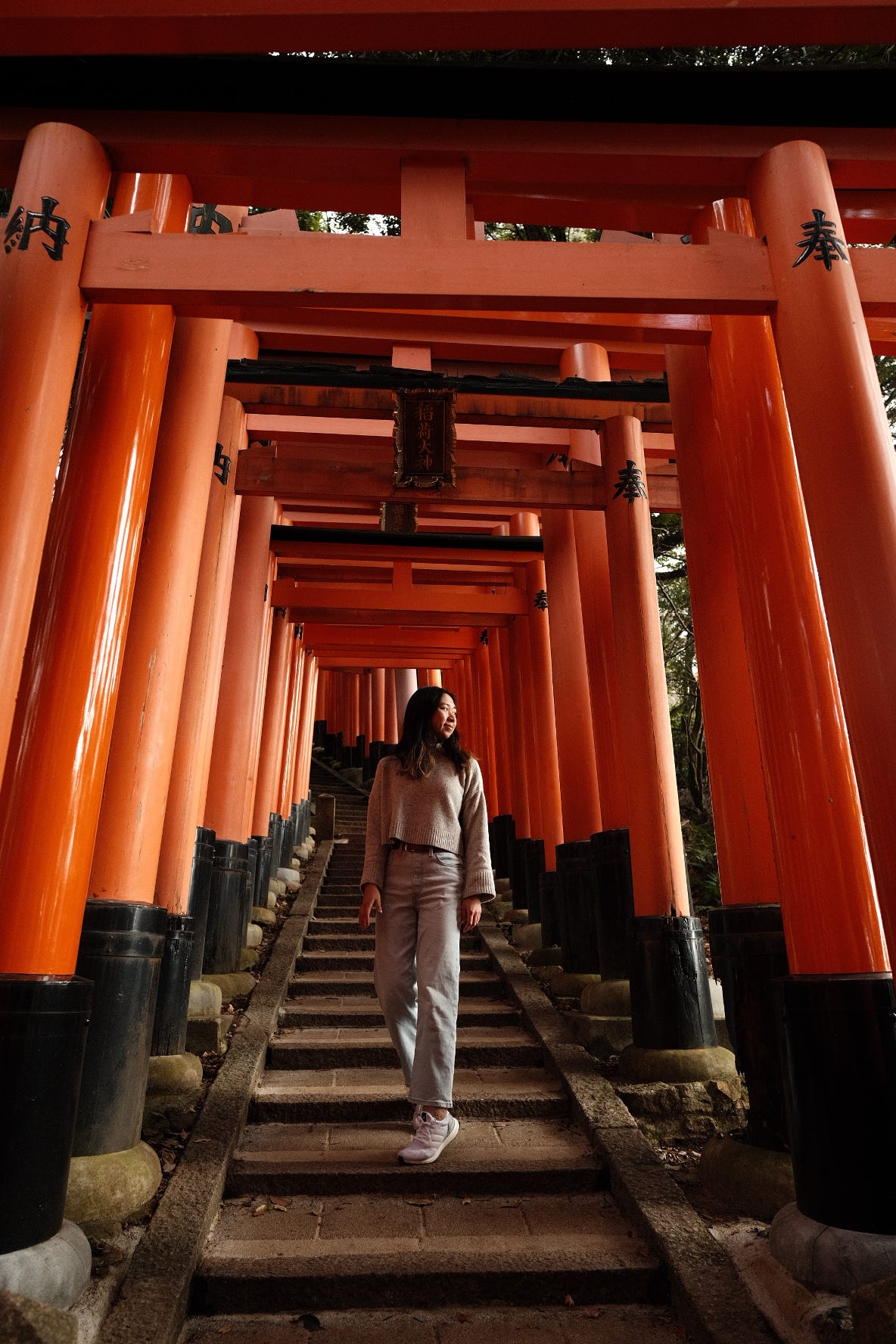
It took around 2 hours for us to make it through the whole path, so by the time we made it back to the base, we had to send Zuri off to catch her shinkansen to Tokyo’s airport. Obviously, I was really sad that she had to leave earlier, but alas, the life of a finance bro means limited vacation days and actual work obligations.
My mom, dad, and I continued on for the rest of the day to the Philosopher’s Path, a well-known walkway between multiple different temples. I feel like if I continue to describe the temples as peaceful, beautiful, and stately, it’s going to get a little repetitive. So, I’ll just let some photos do the talking.
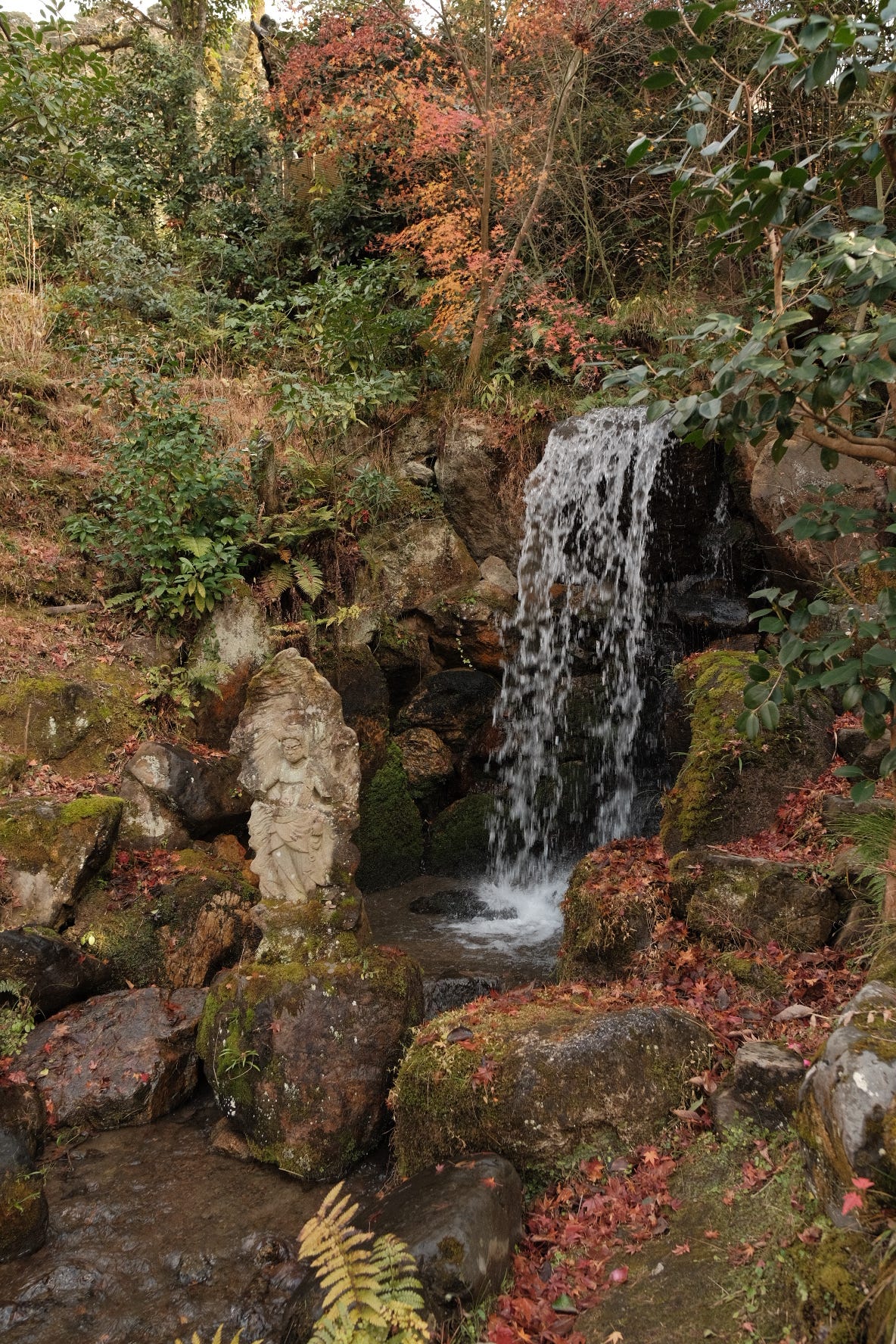

After a long day of temple sightseeing, we had dinner at a cozy udon restaurant called Omen, well-known for its dipping udon. Once again, my seafood allergy caused a little bit of back-and-forth with the waiters, but they ended up bringing me out a completely customized dashi broth (with no seafood) to dip my noodles in. With no extra charge or gripes, they were so accommodating and even replaced my noodles when my broth took a little extra time to come out.
Day 15 - Mount Kurama + Ringing in the New Year
Mount Kurama is located between two towns, Kurama and Kibune, on the northern edge of Kyoto. After taking an hour long train into the mountains, we arrived at Kibune where we visited Kibune shrine, dedicated to the water spirit. As the rain lightly drizzled and the droplets harmoniously fell off the temple roofs, it truly felt like water was infused into the temple. One of the coolest things was you could tell your fortune through the water. Maybe it was a little gimmicky, but my mom took an empty fortune slip from a stack and placed it in the water. Slowly, probably due to some chemical reaction, the words on the blank paper started to appear.
Follow that visit, we paid 300 yen or around $2.30 (wow, American National Parks could never), and started our hike up the mountain. Mom and dad grumbled nonstop during this portion because the first twenty minutes were uphill steps. We said some grateful thank-yous and bowed profusely to the small shrines uphill as we sat down under their roofs, my dad wiped his sweat, and my mom continued to throw coins even though she had no idea who the spirit/god was.
At the top of the mountain, we finally reached the famous Tree Root Pilgrim Path. The roots of old Cedar trees are exposed and intertwisted on the ground. After some googling, we learned that the roots were unable to penetrate the hard geological rock at the top of the mountain but still managed to thrive. Just a few steps away, we reached the Kurama temple complex which has a grant hall and bright flags decorating the outside. We also rang the bell at the top of the tower. According to tradition, you’re supposed to ring it one time to make a wish. Of course, my dad who’s a rebel decided that he should ring it two times to be safe.
On the downhill path towards Kurama village, we passed by one of the most gorgeous shrines, called Yuki-Jinja Shrine. To me, it embodied a true reverence for nature because the star of the show are these two huge Kitayama sugi (cedar) trees that flank the moss-covered torii gate. These yorishiro (an object capable of attracting spirits) are used during worship ceremonies, and they’re lovingly wrapped in white ropes decorated with paper streamers called shimenawa. Beyond their religious importance, they’re just truly majestic trees, and as someone who doesn’t follow any Shinto religion, I still felt more grounded and appreciative for the planet around them.
Our next stop after the hike was Chion-in temple, one of the temples we missed because we had to squeeze in the moss temple on our Higashiyama day. Soon, we found out that we were actually extremely lucky to have missed it earlier. As we milled around taking photos of the temple and pagodas, we noticed that crowds of people were heading up a set of stairs on the edge of the property. My mom said “why don’t we join them,” so we joined the children, parents, and grandparents all ascending the stairs and at the top, we could barely see what was going on due to the crowds already there. But, we really didn’t have to see as we heard the first resounding gong. At this moment, I recalled an article I read about how Chion-in has the largest bell in Japan. I also remember reading that it’s basically never rung.
Inching our way forward, we saw the massive bell and the group of monks standing around it. They had this interesting technique to ring the bell. While around sixteen monks hold ropes to stabilize the horizontal pole, the leader uses his entire body weight to pull the pole forward, completing a half-somersault in the process. The person next to us told us in a hushed whisper that they have to ring it 108 times, but we probably only stayed for the first 20.
Only after we left did we realize that we were extremely lucky to have witnessed their bell-ringing. Firstly, they only ring the bell two times a year, once during their memorial day and once normally during New Years Eve. However, because of covid concerns, they decided to scrap their new years eve ringing and decided to ring it on the 27th at 2pm, which is exactly the day and time that we arrived at the temple.
Unfortunately, I didn’t get any good photos or videos of the ceremony because the crowds were insane. But, if you’re curious, here’s a video of what the bell-ringing looks like:
After stopping by an uneventful Nijo Castle, we went to Nishiki Market, Kyoto’s premier fish and food market. Some highlights were soy milk croquettes and soy milk doughnuts. Even though I’m not a typical fan of doughnuts, these were warm, light, and slightly sweet brown sugar syrup and kinako (roasted soybean) powder. My mom went all-in on the seafood skewers and got octopus, squid, and scallops that are grilled right in front of you. Dad and I shared a chestnut daifuku (mochi), pumpkin croquettes, and a fruit sando.
That’s it for Kyoto and this newsletter, thank you for joining me. If you’re a Duke student, best of luck for the spring semester that’s starting soon. If you’ve made it this far, comment your favorite Australian animal, and I’ll try to find one.
Next time, we’ll be heading to Nara and Osaka for the last few days of the Japan trip, so thank you for sticking with me for the past few weeks!


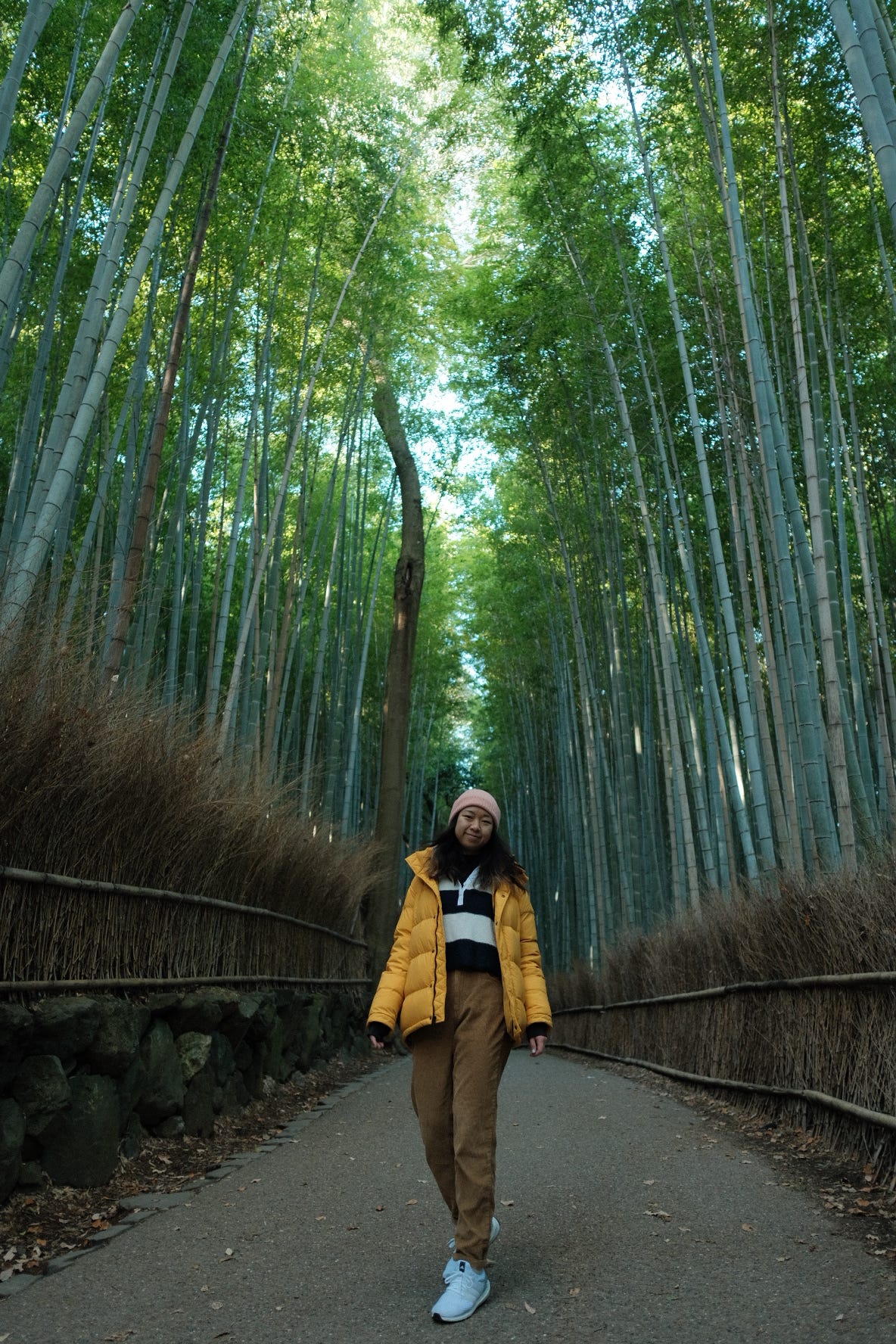
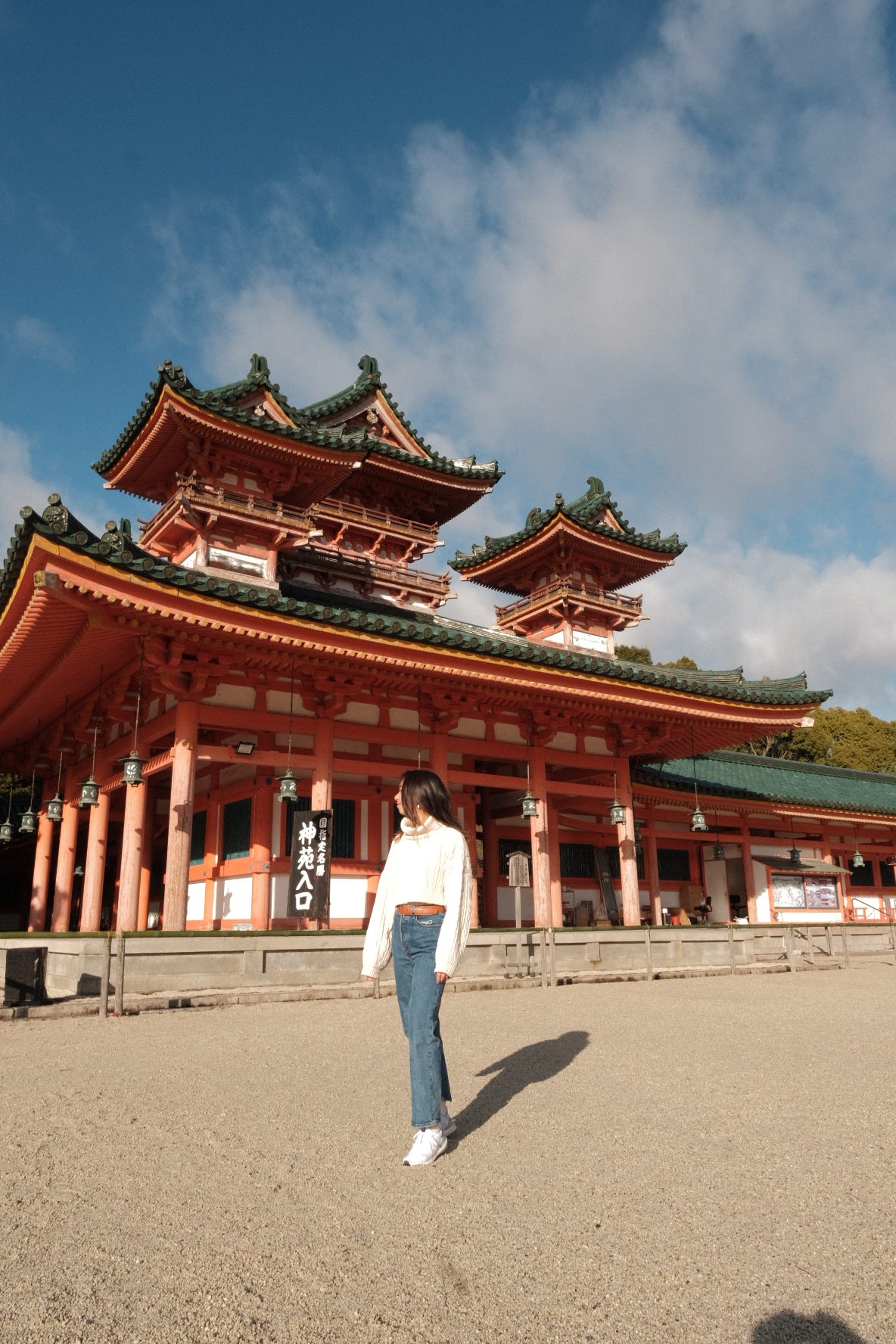
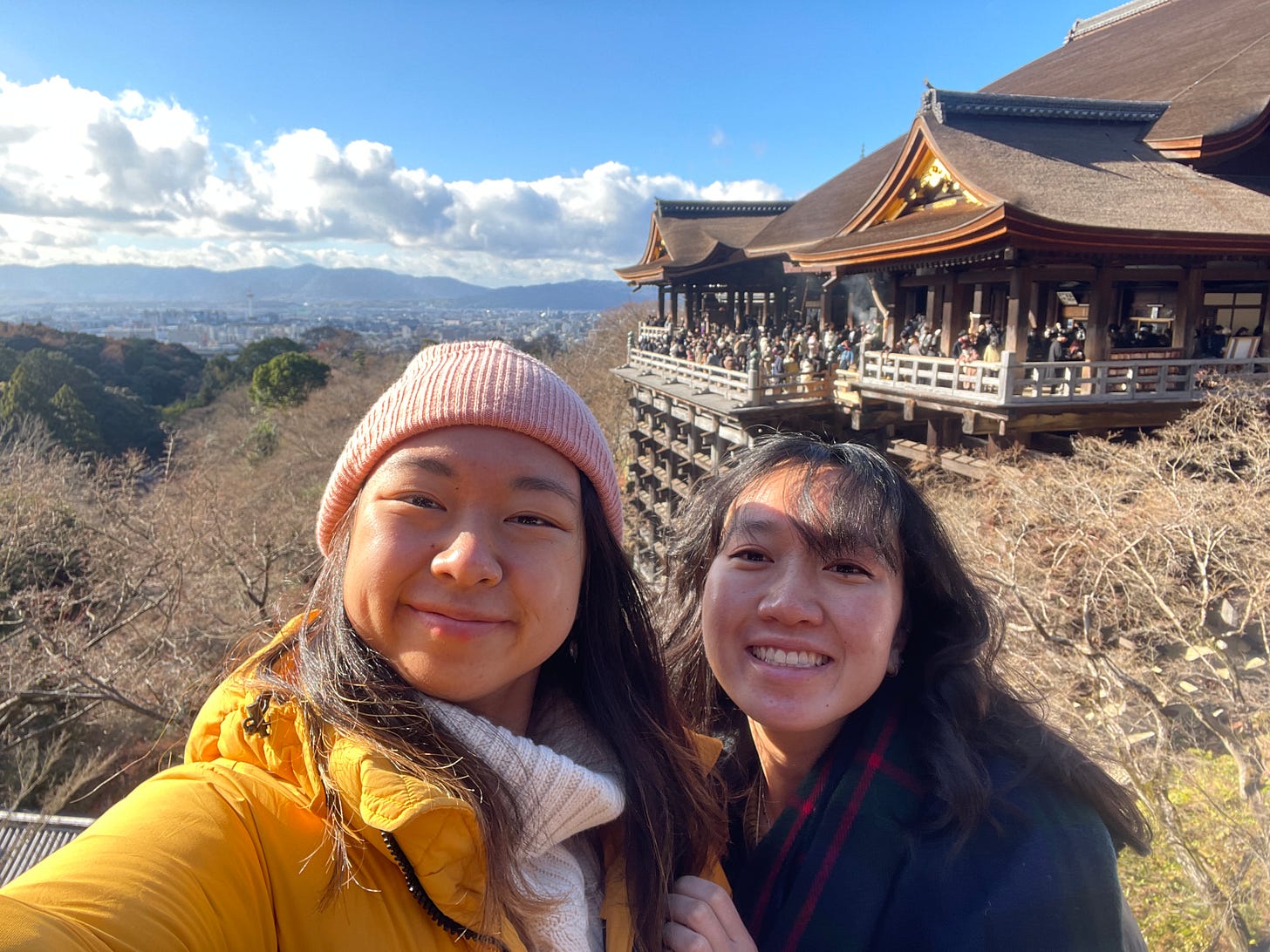
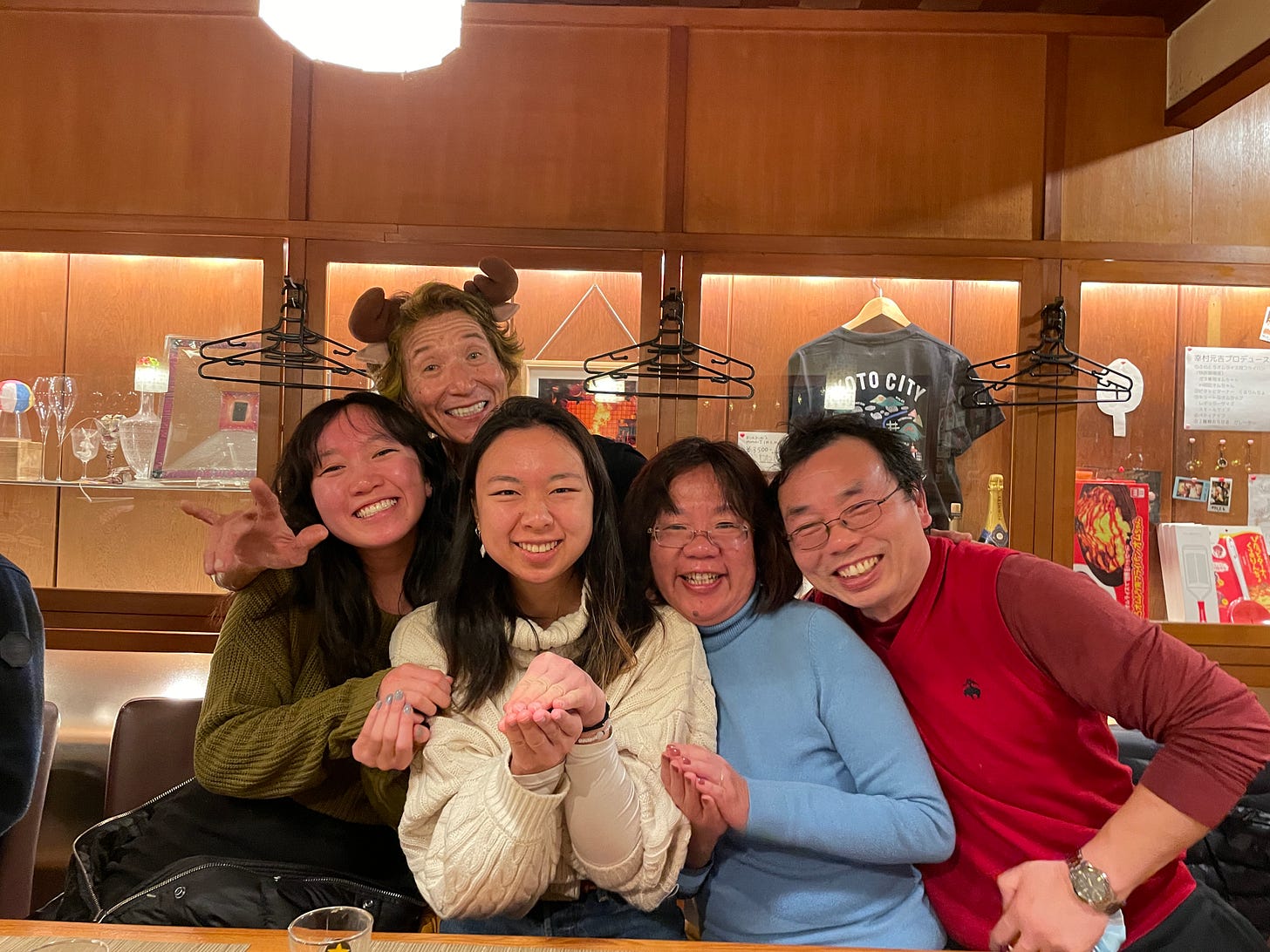
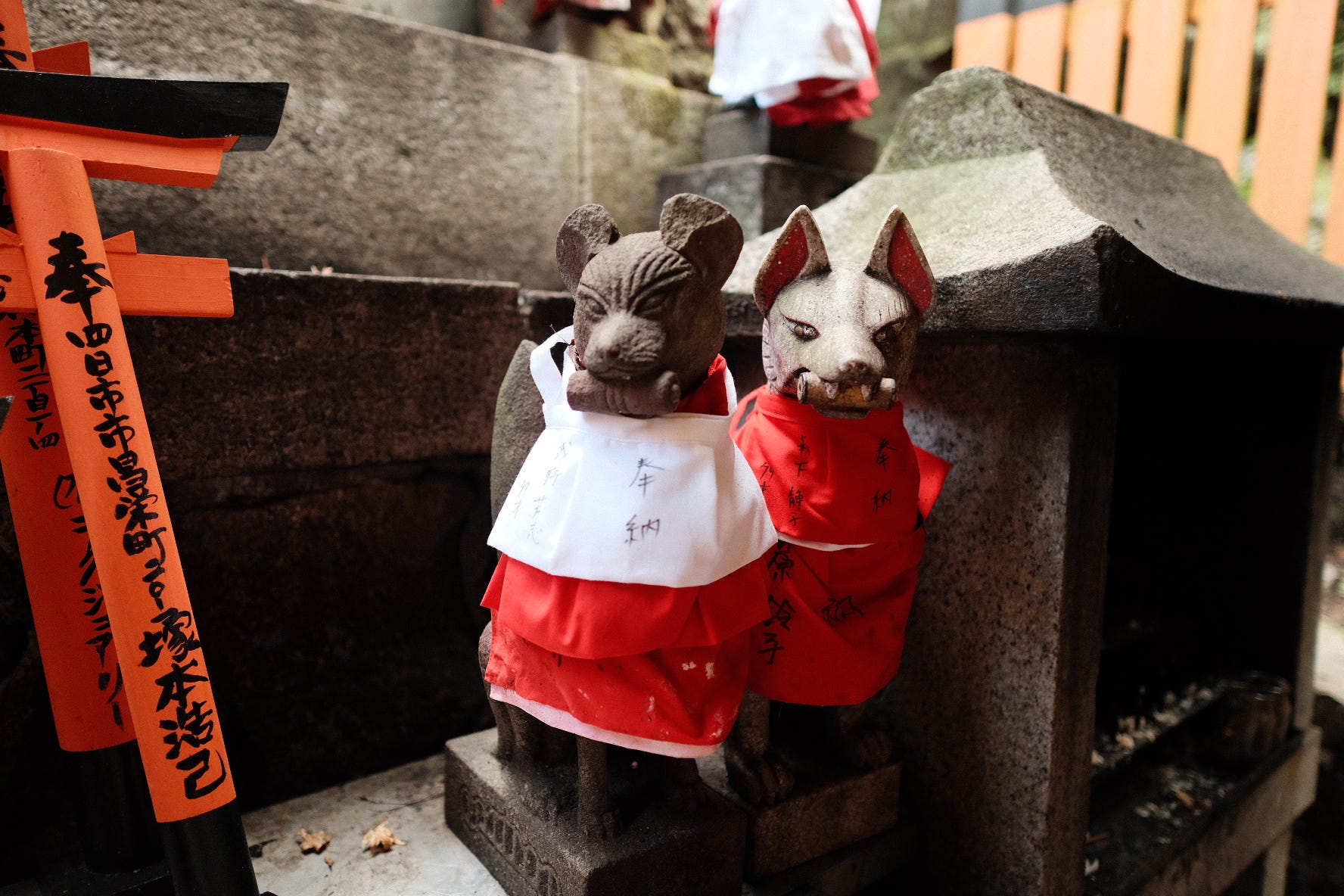

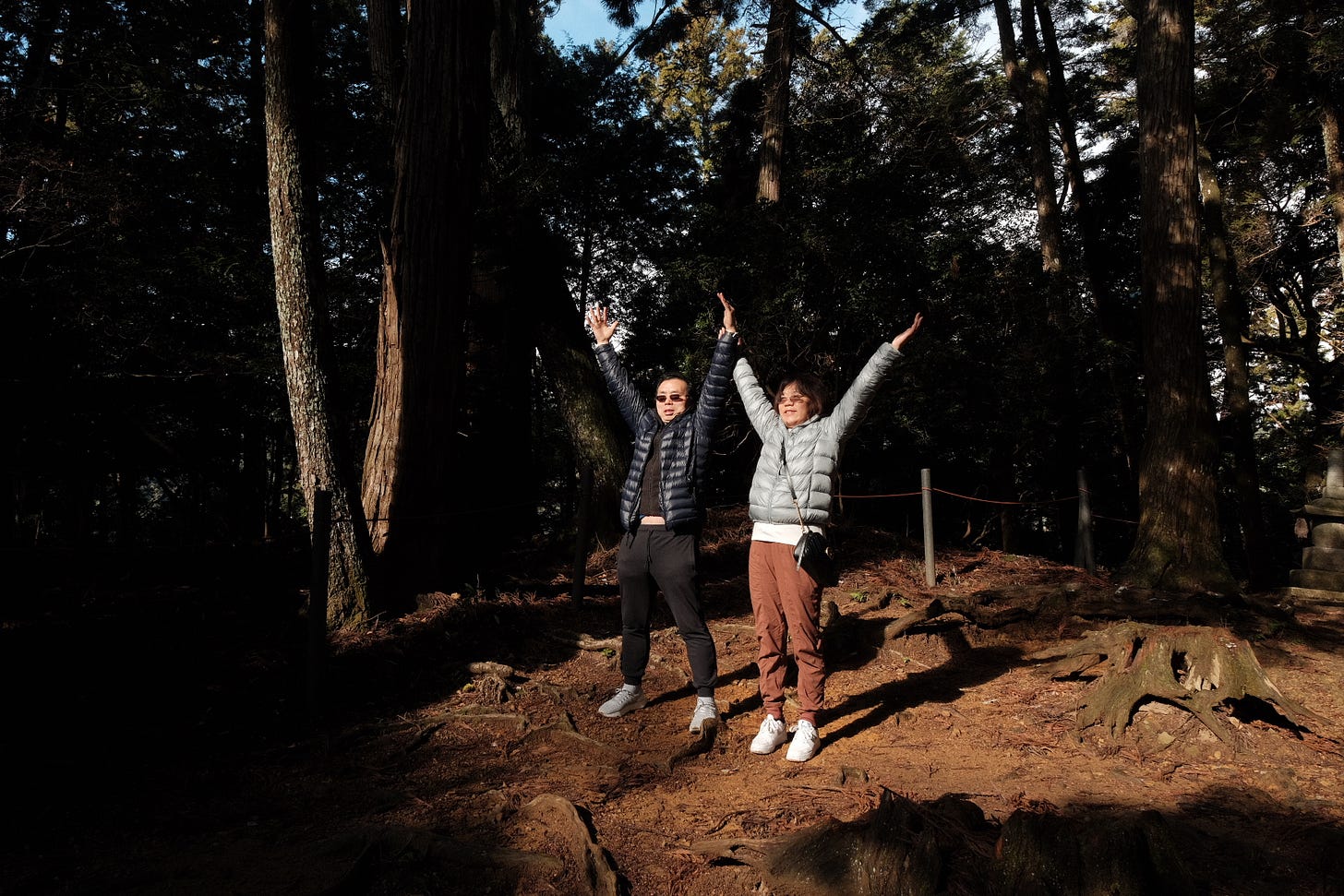


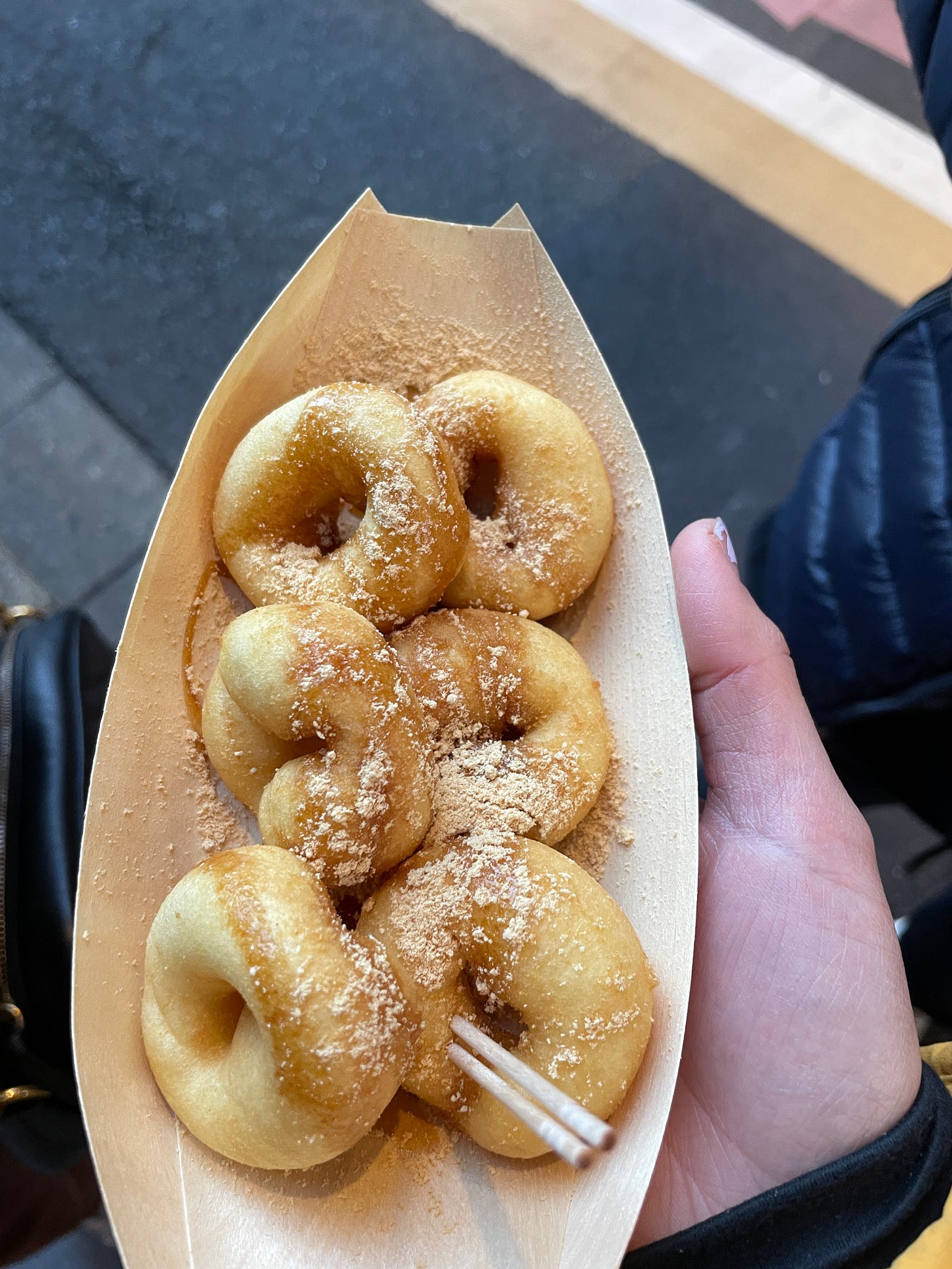
FIND ME A WOMBAT EMILY !!!! And of course the hard candy store that I have plugged so often. I can’t believe y’all met THE omurice man
I save these to read as a reward for myself